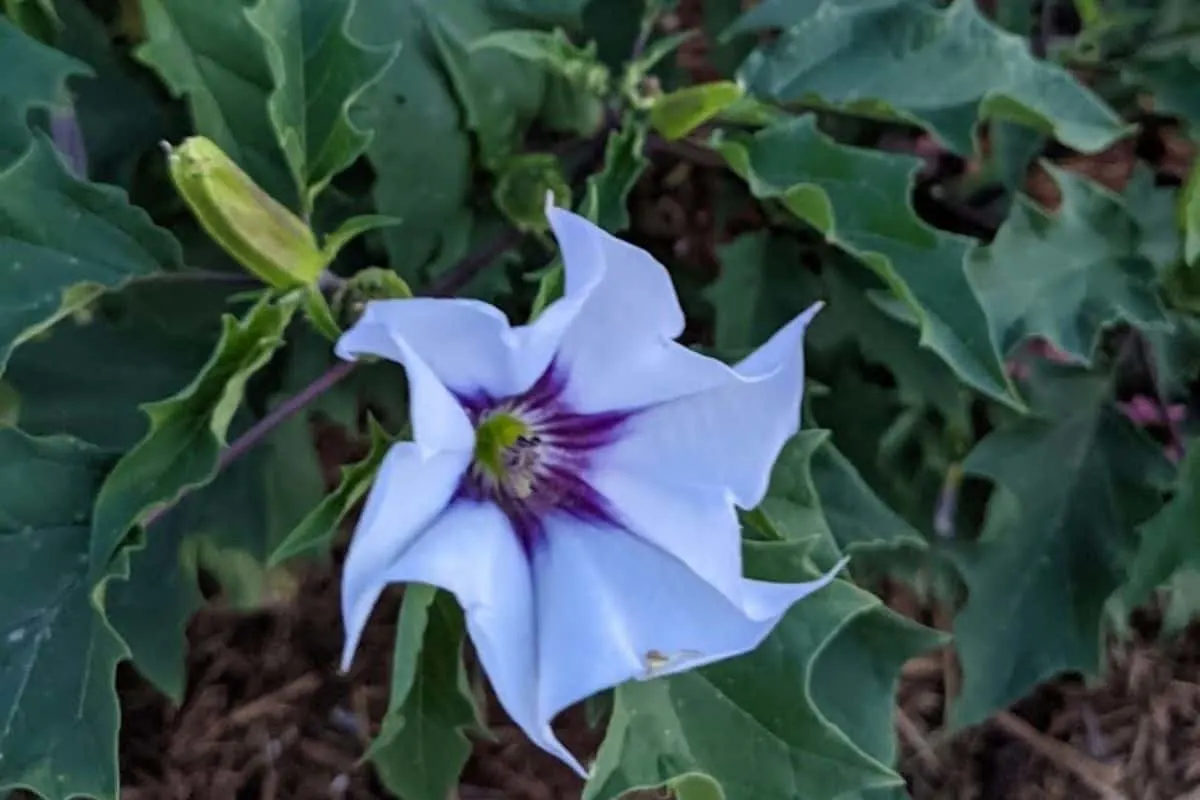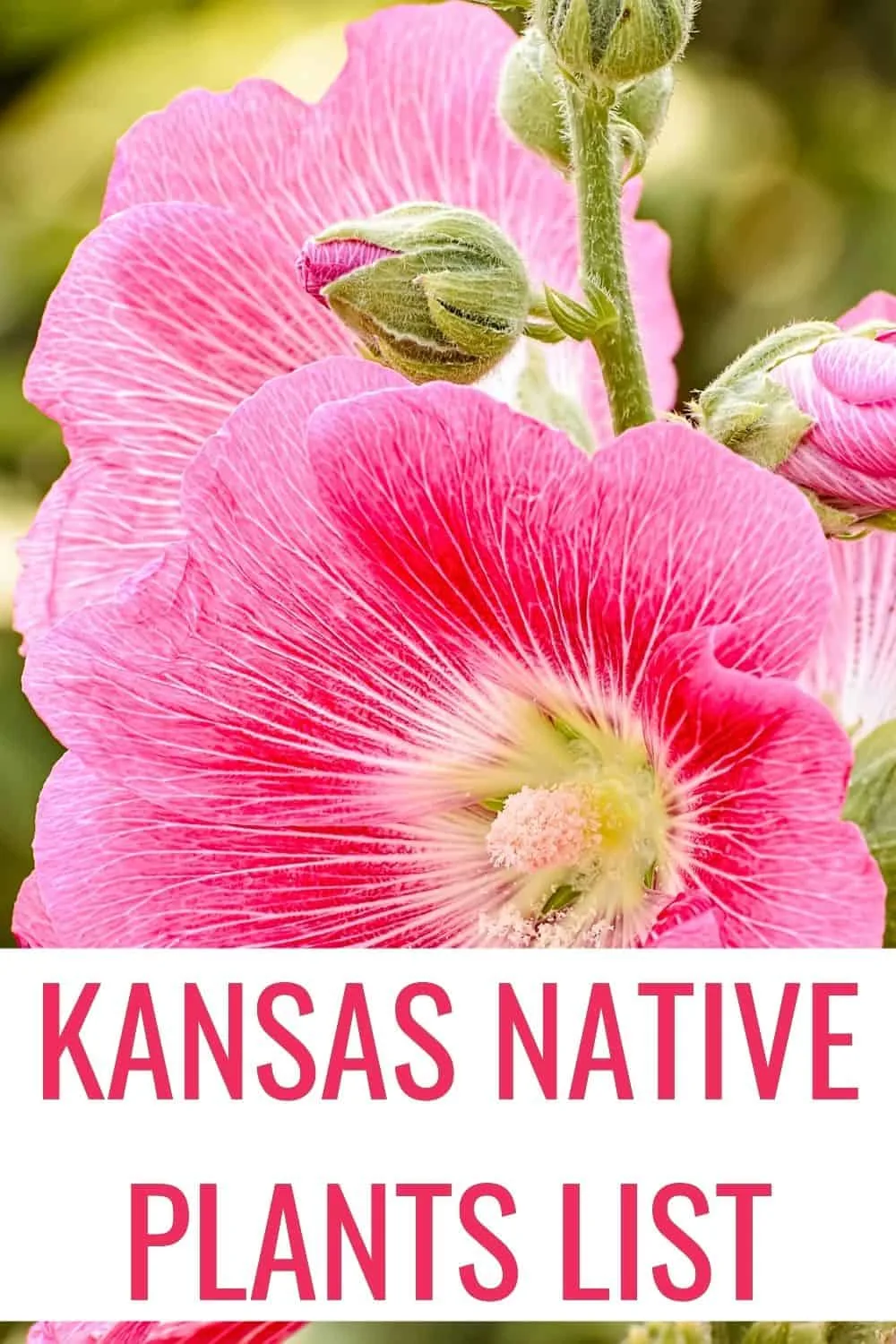Our Kansas native plants list will help you choose the very best native wildflowers to brighten your lawn or garden. Whatever Kansas climate you are hosting in your landscape, there are great native flowers that will work for you. It begins with learning more about native plants and why they are beneficial to your landscape.
There are plants and wildflowers native to Kansas soils and climates to include trees, shrubs, grasses, mosses, vines, and sedges as well. These native plants do better in lawns and gardens than non-native plants for a variety of reasons. We will discuss some of these reasons below and suggest some beautiful wildflowers for you to consider.

What Are Native Plants?
Native plants are those that are indigenous to an area. This means they were not introduced by settlers but occurred naturally in the area. Many of these plants can make great garden plants because they are low maintenance, are hardy, and are already adjusted to the climate, insects, pests, and diseases in your area because they have evolved together.
Native plants are easier to work within a home garden because they typically do not require a lot of maintenance. You may need to put some work into getting them started initially, whether planting from seed or transplanting. But once they are established, they do their own thing and need little intervention.
Kansas Native Plants List
While not just any wildflower will do, there are some that commonly do well in gardens and landscapes. If you see some Kansas natives that catch your eye, you can speak with an area specialist to help you determine if it will do well in your area.
In fact, your best bet for building a native garden is to get a property evaluation for your property. This will include an inventory of the plants there already, identify any invasive species that need to be removed, recommend new plants to add, and techniques to help you manage your landscape. This type of evaluation is very valuable.
Here are some native wildflowers that will really make your garden pop.
1. Swamp milkweed (Asclepias incarnata)
As the name implies, this milkweed does well in swampy areas. It likes full to partial shade and does well around ponds or streams. If you have a water feature in your landscape, this could be a good choice for you to go beside it.
Swamp milkweed grows to about 3-4 feet tall and it blooms in July, August, and September. The flowers bloom a pale pink color, or sometimes rose-purple shade, and they give off a vanilla scent. You will attract beautiful migrating monarch butterflies to your garden with these.
2. Sunflower (Helianthus)
The wild native sunflower is Kansas’ state flower. The genus Helianthus can actually make up over 70 different species of flowering plants in the daisy family. The native sunflower which is the floral emblem of Kansas is the standard, large, yellow flower with a brown center that we have all come to know and love as the representation of a sunflower.
Sunflower heads actually consist of 1,000 to 2,000 individual flowers joined together by a receptacle base. The large petals around the edge of the head are actually ray flowers and these do not develop into seed.
3. Early Buttercup (Ranunculus fascicularis)
Early buttercup is sometimes also called prairie buttercup or prairie tufted buttercup. These stems grow erect in single or tufted fashion and can be grey or white and a bit hairy. Basal leaves grow on the stalks, and the flowers bloom at the very top.
Early buttercup is found most often in the eastern ¼ of the state in prairies and dry wooded areas. They grow from about 4-8 inches tall but when in bloom, the flowers can make them taller. Buttercup is easily recognizable and looks good in any garden.
4. Joe Pye weed (Eutrochium maculatum)
Another choice on our list is Joe Pye weed. Don’t let the “weed” in the name fool you because this perennial has some pretty blooms. It’s a very tall native, with mature heights reaching as much as six feet. The green leaves are attractive themselves and the purple stems host rosy-pink flowers.
They bloom in mid-to-late summer, and they attract local pollinators like birds and bees and even some butterflies.
5. Hollyhock (Alcea rosea)
Hollyhock is a biennial or short-lived perennial that grows to about 3-10 feet. It’s part of the mallow family and it flowers from May all the way to September which means when added to your garden, you can get a lot of bloom from it.
The stems are hair and erect, mostly unbranched, and the showy flowers bloom at and near the top. In the wild, they grow in waste places, fields, roadsides, and even by railroads. Imagine seeing the beauty of hollyhock blooms sprouting out of the most unlikely places? They would look great in your flower garden and are beneficial to the local ecosystem.
6. Buffalo gourd (Cucurbita foetidissima)
Another option for your garden is buffalo gourd. Although it is a flowering plant, this is actually a type of wild gourd. It is sometimes called fetid while pumpkin. It’s in the cucumber family and grows in the wild in dry, disturbed areas, waste places, roadsides, and even along fence lines. It’s found all throughout Kansas.
It has trailing stems that can reach from 5-25 feet and a huge taproot underground that can be as much as 4-6 feet long and weigh over 100 pounds. While not a traditional flower like the others on this list, it can serve a function, and when in bloom, the orange flowers are showy and bright.
7. Spiderwort (Tradescantia occidentalis)
You might also consider spiderwort for your garden. Kansas spiderwort is sometimes called prairie spiderwort. It has long, straight, slender stems that grow erect and will sometimes branch. Commonly found in prairie parts of the state, it likes dry, sandy, or rocky soil. It blooms beautiful purplish flowers from May to August.
There are also some other, very similar types of spiderworts in Kansas:
- common spiderwort
- bracted spiderwort
- Tharps’ spiderwort
8. Plains larkspur (Delphinium virescens)
Plains larkspur is part of the buttercup family and is technically an herb. It has broad leaves and blooms at certain times of the year. The flowers can be purple, lavender, or white, and sometimes show as a combination of these colors. It can grow up to 3 feet tall and about half a foot wide. The typical flowering season is May to June.
It likes full sun and wet, soggy soil or marshlands. It can also grow in other soil conditions and is quite versatile this way.
9. Bloodroot (Sanguinaria canadensis)
Bloodroot is one of the first Kansas woodland wildflowers to bloom in the spring and would also make a good addition to your native flower garden. This perennial grows just 2 ½ to 7 inches tall and is part of the poppy family, which you will be able to tell from the shape of the flowers. It blooms from March to April and is a good resource for early spring pollinators.
The flower has showy white petals with a yellow center. The flowers will close at night and reopen in the morning.
10. Jimsonweed (Datura stramonium)

The flowers on jimsonweed open in the late afternoon and also have a very sweet smell that attracts night-flying hawk moths for pollination. This plant is often called moonflower, due to the fact that it opens at night.
The large, showy flowers are usually white-in-white, or purple-in-purple. It grows in nature from waste ground, barnyards, flood plains, along streams, and in rich soils of pastures.
Note: this plant is highly toxic. It’s more of a risk to humans than to livestock, and it contains potentially fatal tropane alkaloids.
11. Virginia clematis (Clematis virginiana)
Clematis is another great flower for your garden. Sometimes just called clematis, this is a vining plant that will climb or sprawl and is a part of the buttercup family. It can grow as high as 20 feet and as wide as 5 feet. It will also climb a fence or trellis. It does well in various types of sun and soil conditions. You can typically expect blooms from July to August and the flowers are white and green.
Now that you know about these beautiful wildflowers available to you, let’s look at some other questions you might have about native plants and wildflowers in Kansas.
Kansas native plants list FAQ
Here are some questions commonly asked about native plants in this state. If you don’t see your question on the list, feel free to leave a comment below. We’ll do our best to answer.
Where can I buy native plants in Kansas?
The best place to buy native plants in Kansas for planting in a garden or landscape is from a local nursery. Here they will have experts to answer your questions and they will typically carry natives that are best for your region, versus those that grow in other parts of the state.
Are sunflowers native to Kansas?
Sunflowers are native to Kansas. In fact, they are so well known to Kansas that they are the official state flower.
What is the state flower of Kansas?
The sunflower is the state flower of Kansas. The weather is perfect for sunflowers in Kansas, but it’s also the state flower because it can be found in every single county throughout the state. Imagine that?
What types of native gardens can I grow in Kansas?
If you have the right conditions, you can grow any type of garden you want. That said, here are some types of native gardens you might be able to grow in the state:
- prairie garden
- woodland garden
- bird garden
- wildflower garden
- etc.
Some people like to create various landscaped habitats all in the same landscape, with conditions right for each of the above, essentially sectioning off the main garden into different sub-gardens. This is where a property evaluation can be very helpful.

Lisa Clark is a freelance writer who grew up on farmland, then moved to the city, and has now retired back to her rural roots. She's having fun teaching her kids about gardening, planting flowers, and collecting houseplants.











